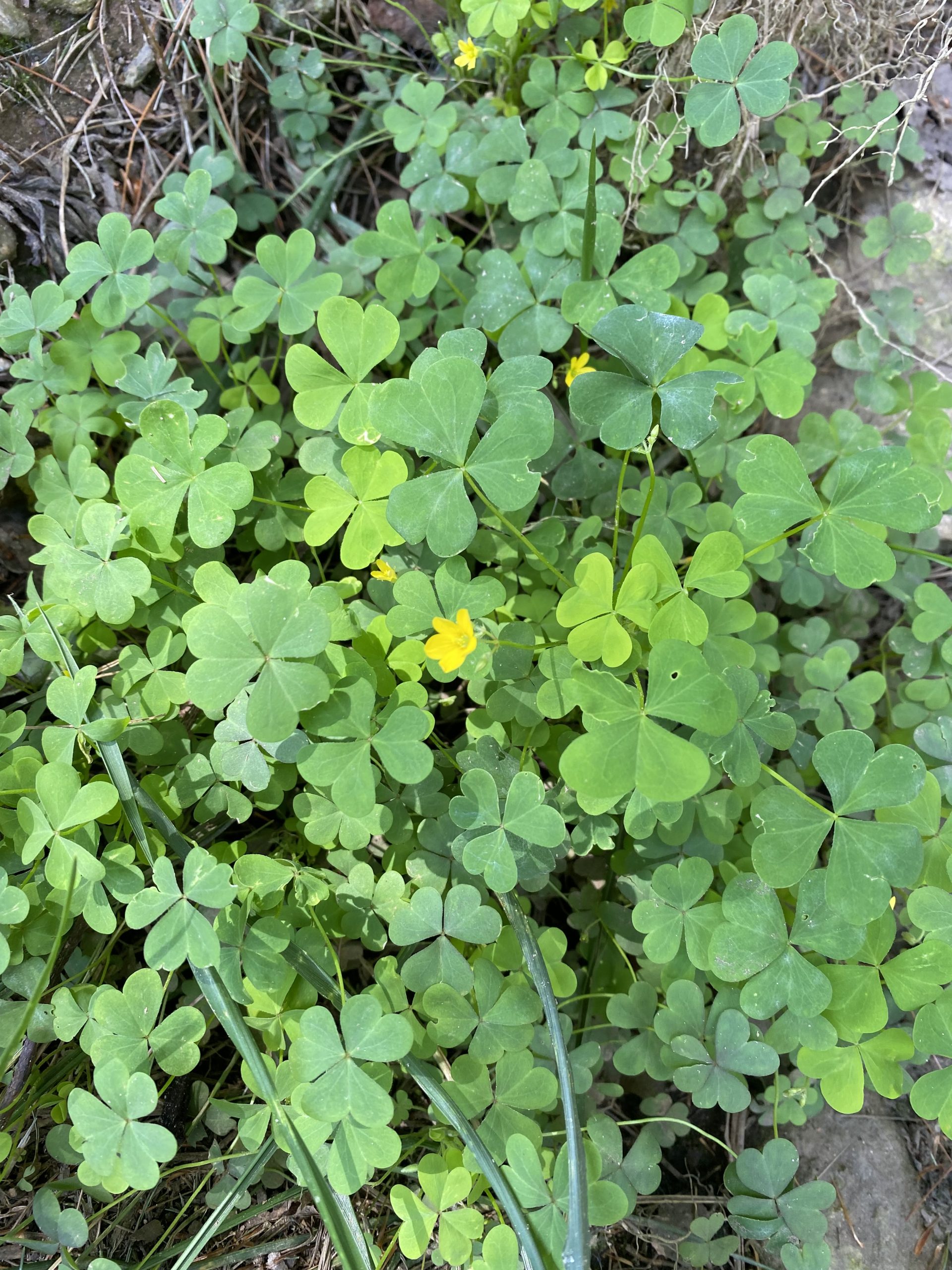LAWN PHIX PRO TIPS
Oxalis and clover are two different weeds but have many similarities. I found it easier to keep it simple and treat these weeds the same. Both can be eradicated throughout the growing season with a selective broadleaf weed herbicide containing 2,4-D and Triclopyr. Clover is one of the most common lawn weeds I encounter, and for an all-in-one solution, I recommend End Run with Trimec.
- Oxalis is also known as yellow woodsorrel.
- Common clover species are white, red, and hop clover.
- Oxalis has small heart-shaped leaves and yellow flowers
- Clover will have larger leaves and white flowers.
- Clover is a perennial – oxalis is perennial but can also be an annual.
- A pre-emergent (prodiamine) can help stop the proliferation of both weeds.
- It’s best to use a surfactant as the herbicide droplets can roll easily off these tiny leaves.
Both oxalis and clover can pop up suddenly in lawns. Left untreated, these common weeds can spread, and their large quantities may threaten to take over your lawn and flower beds. While oxalis forms three heart-shaped leaflets, clover features three oval-shaped leaflets; the differences in each plant’s leaflets are the easiest way to identify these weeds, but there are other distinguishing factors that we’ll explore here.
Table of Contents
What’s the Difference Between Oxalis and Clover?
Oxalis, also known as yellow wood sorrel and false shamrock, looks quite similar to white clover. Although both of these perennial weeds feature three leaflets, oxalis has heart-shaped leaves; clover has oval-shaped leaves. Oxalis produces small yellow flowers, while common clover produces bushy white flowers. Also, oxalis is toxic in large quantities. Clover is not toxic (though, in warm climates, it can be mildly toxic) and is also planted in meadows for livestock.
What Are the Similarities Between Oxalis and Clover?
Both oxalis and clover are both perennial plants that are occasionally planted as a low-maintenance ground cover; however, in most cases, these plants are unwanted in lawns. Both plants can grow up to a foot in height, produce seed pods, and bloom between May and October. However, the chief similarity between these two plant types is their three-leaflet leaf structure. Both young clover and oxalis look quite similar until their flower blooms.
What Is Oxalis?
Yellow wood sorrel (Oxalis stricta) is one of the most common types of oxalis. It produces small yellow flowers, but there are more than 800 species of oxalis. Purple wood sorrel is another common type of oxalis. Yellow wood sorrel is a low-growing plant that can spread tenaciously in lawns and garden beds by seed, stem fragments, rhizomes, bulbils, and its prolific seeds. Killing this common weed is difficult and often requires more than one growing season.
Yellow wood sorrel features green leaves and slightly hairy stems. The leaves of yellow wood sorrel are bright green, but the leaves of creeping wood sorrel (Oxalis corniculata) may have green or purple leaves. Although oxalis will tolerate shady areas of your yard, it tends to thrive in full sun and in moist soil.
Some people may attempt to pull oxalis from their grass by hand, but this method often proves unsuccessful. Yellow wood sorrel and other types of oxalis will grow back if even a small part of its stem or roots are left in the soil. Moreover, its seeds can remain viable in soil and lead to a new crop of oxalis plants. Many gardeners rely on selective broadleaf herbicides to get rid of oxalis in lawns.
You can use a non-selective herbicide for more reliable weed control in flower beds where the plant may be more isolated. To prevent oxalis plants from growing in garden beds, consider laying a layer of mulch to prevent its seeds from germinating. Maintaining a dense, healthy lawn will help you reduce the risk for major oxalis outbreaks. Remember, too, that wood sorrel can be toxic when eaten in large amounts.
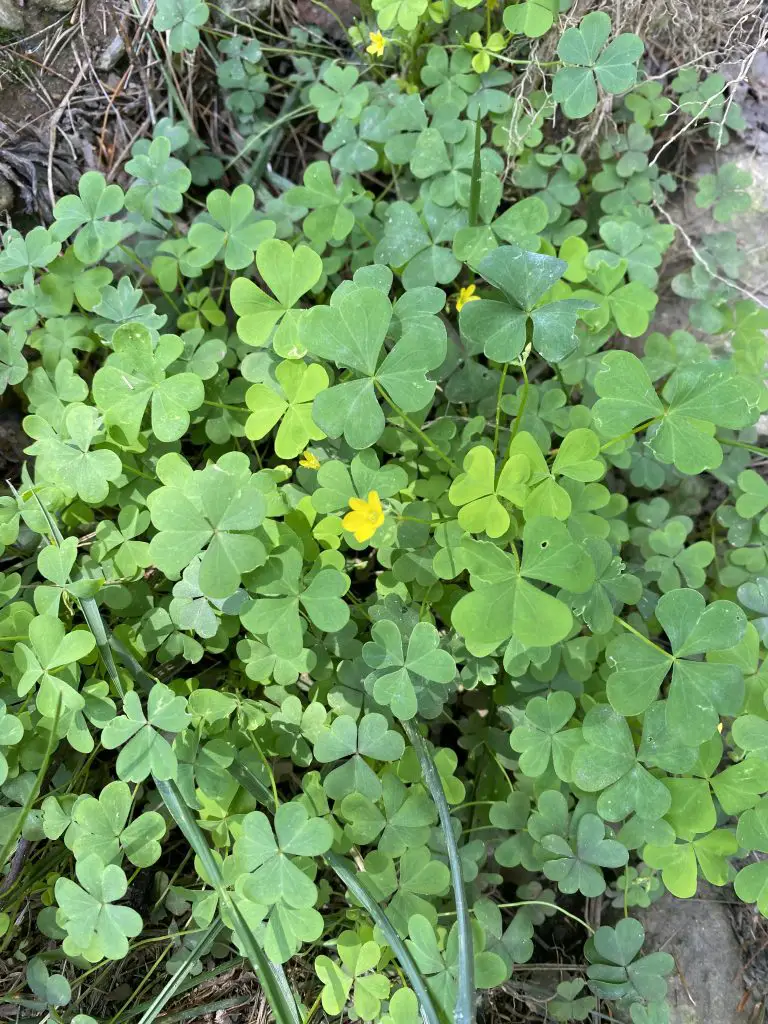
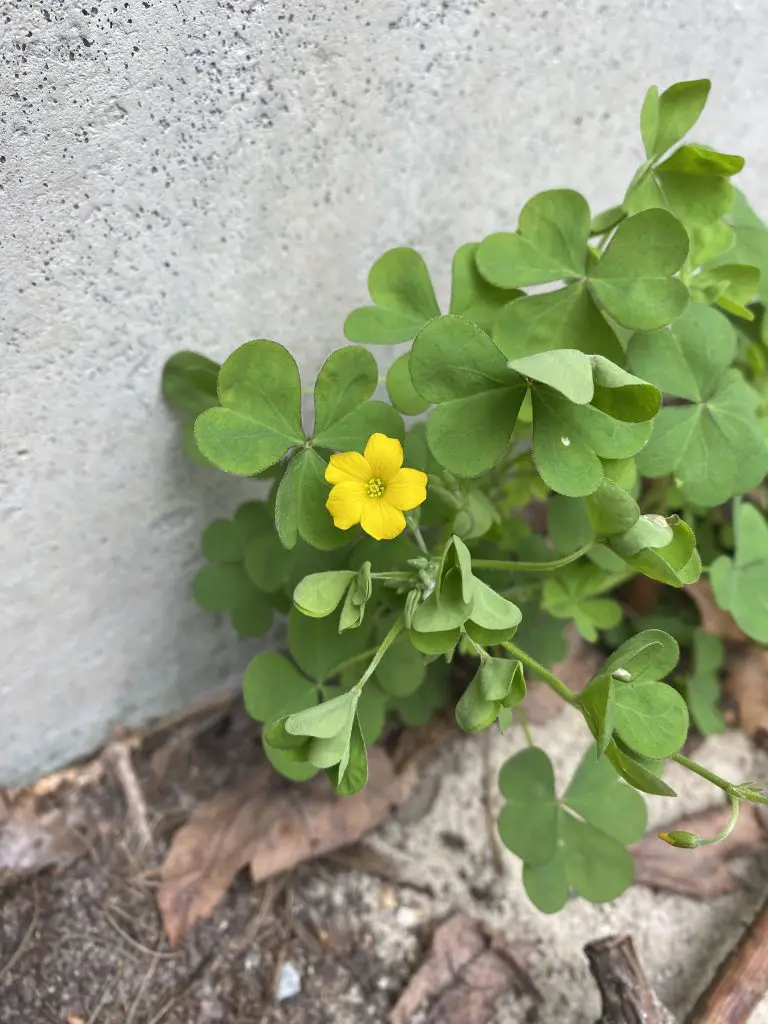
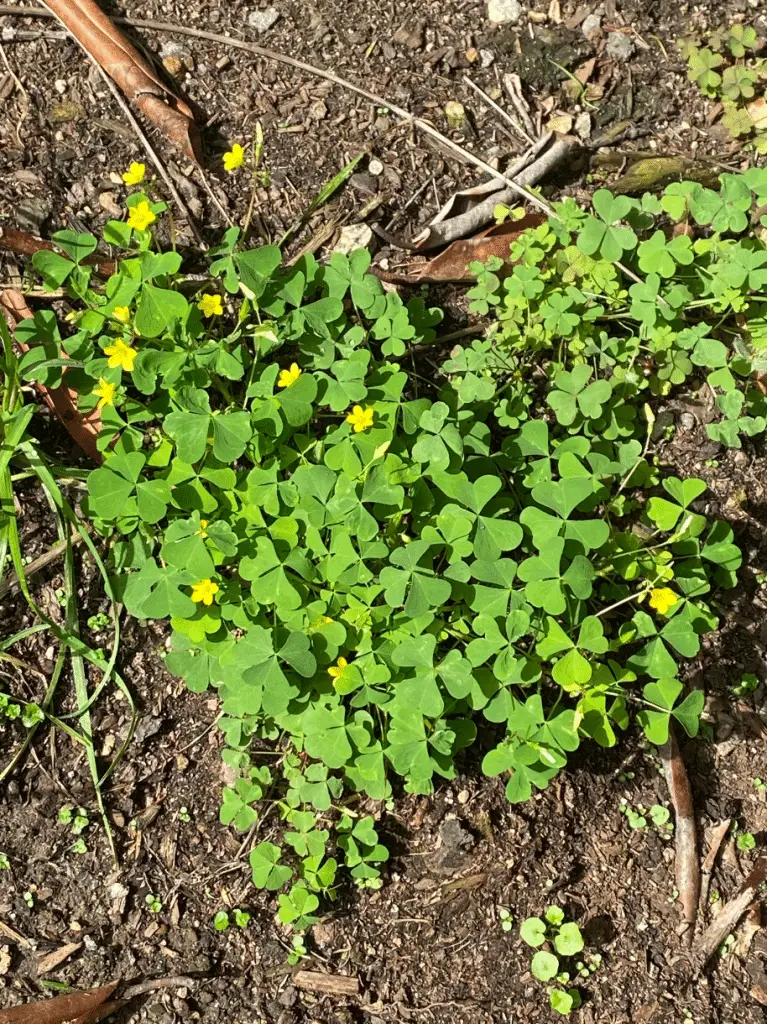
What Is Clover?
There are two main types of clover plants: white clover (Trifolium repens) and red clover (Trifolium pratense). Clover is a member of the legume family. White clover produces white flowers while red clover produces pink or red flowers. Although typically unwanted in a uniform conventional lawn because it can spread aggressively and attract bees to yards, clover is frequently planted as ground cover and is a useful livestock crop.
Clover can also benefit the soil as it is a nitrogen-fixating plant. This means that it absorbs atmospheric nitrogen that can be used by the soil where it’s growing. Consequently, clover can grow in poor soil that’s low in nutrients. Clover also provides food for pollinating insects and birds and is edible in small amounts.
White clover (Trifolium repens) can spread by its seeds and creeping stems. Clover tolerates close mowing so the best way to get rid of the plan is to mow your lawn higher. The taller grass will prevent sunlight from reaching the plant and promoting its growth. Pre-emergent herbicides tend to be most efficient weed killer for killing clover in lawns. Removing clover by hand is possible when it’s growing in small amounts, but like wood sorrel weed, it too can be challenging to eradicate in a mere season or two.
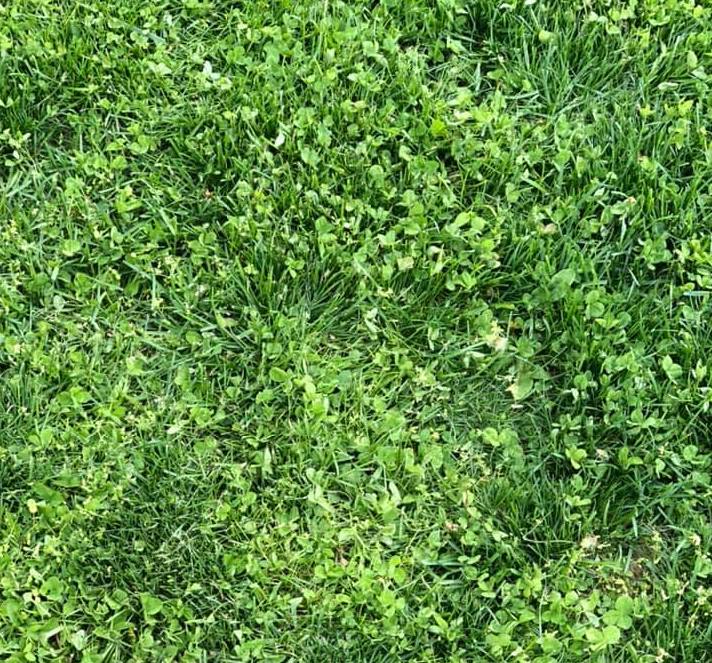
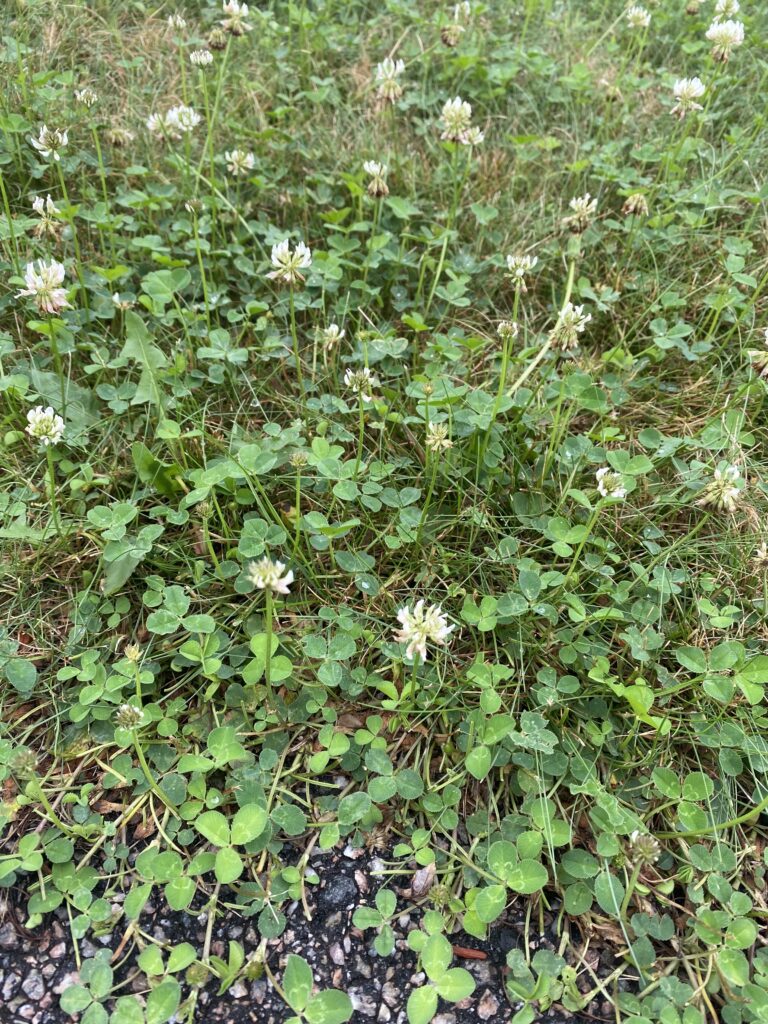
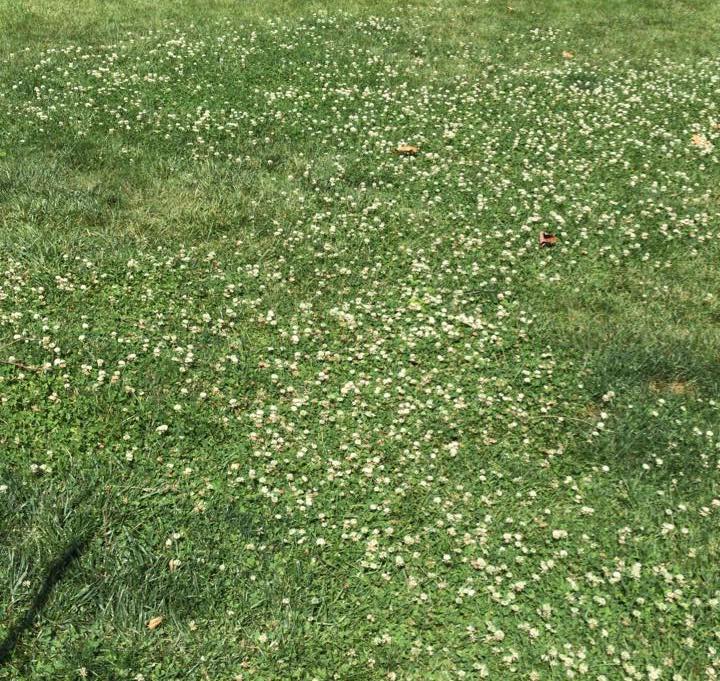
Oxalis vs Clover FAQs
Is clover the same as oxalis?
No, clover and oxalis are different types of plants. While both are perennials and largely regarded as weeds, clover is from the genus Trifolium and oxalis is the name of the large genus of wood sorrel plants. Yellow wood sorrel is the most common oxalis species while white clover and red clover are the two most common types of clover plants.
Is oxalis in the clover family?
Oxalis is not a species member of the clover family. Wood sorrel plants are from the Oxalidaceae genus of plants. However, both plants can tenant the same yard and have similar bloom times in summer. A helpful way to tell the difference between yellow wood sorrel and clover is that wood worrel has heart-shaped leaves, and clover has oval-shaped leaves.
Is clover the same as shamrock?
Many plants are referred to as shamrocks, but clover most of all. A shamrock refers to a plant, usually clover, with four leaves instead of the typical three. The fourth leaf is a mutation that occurs in roughly one out of 10,000 clover plants.
Is an oxalis a shamrock?
Oxalis weed or wood sorrel is sometimes called false shamrock, but like clover shamrocks, it, too, may produce a fourth leaflet as an anomaly.

